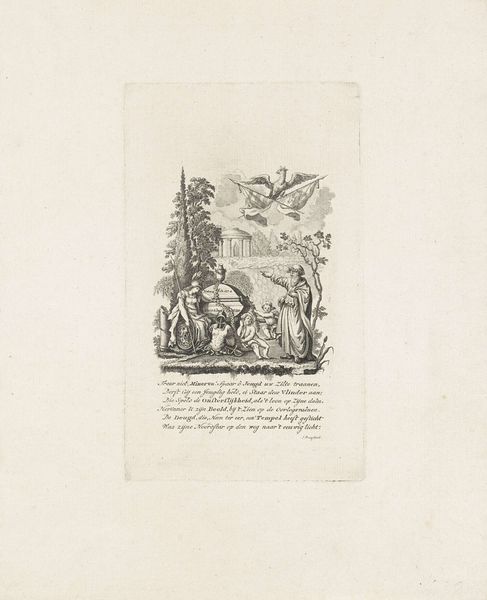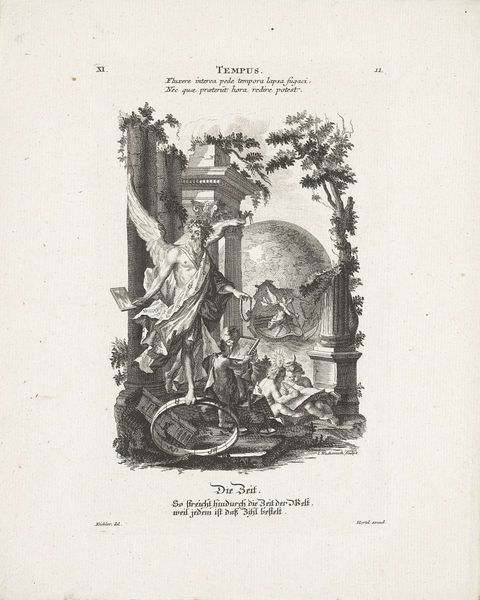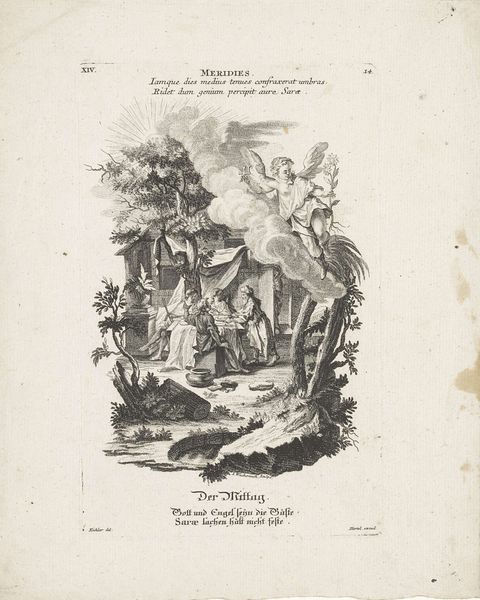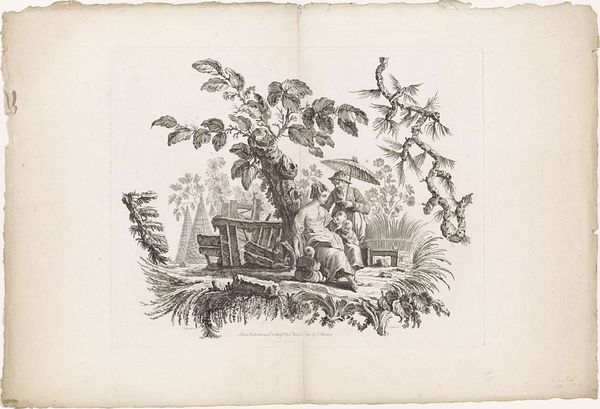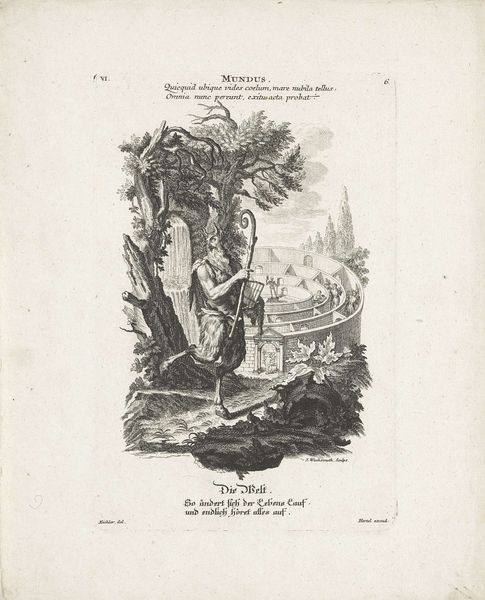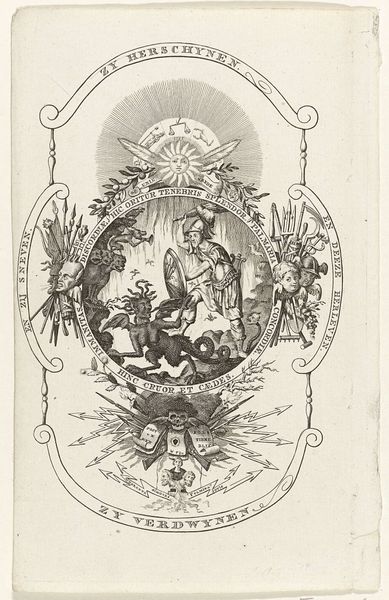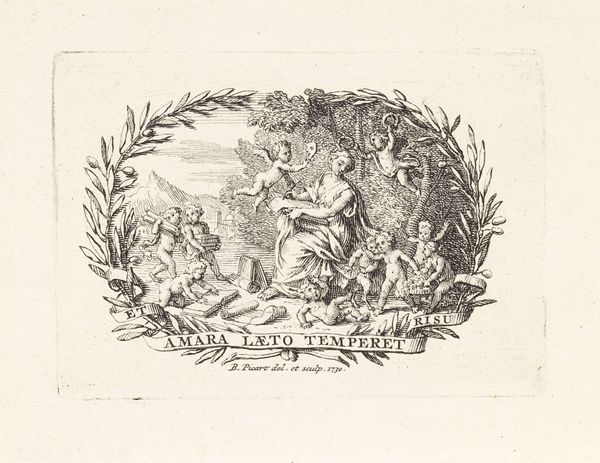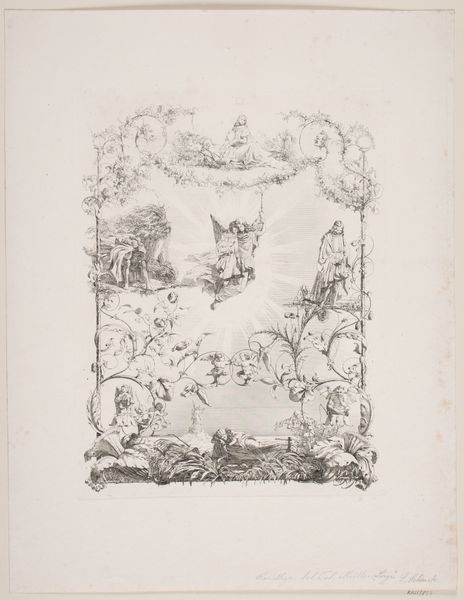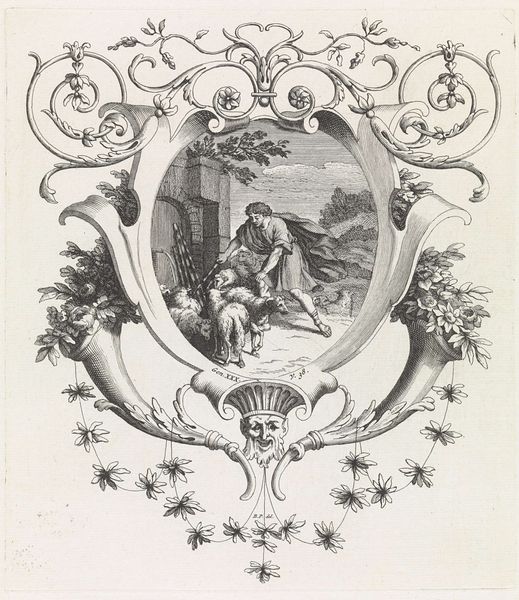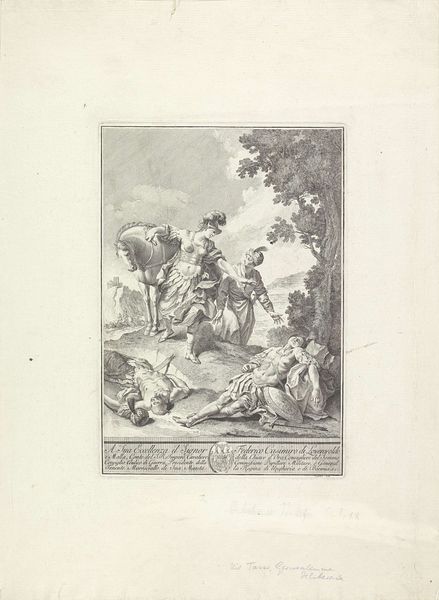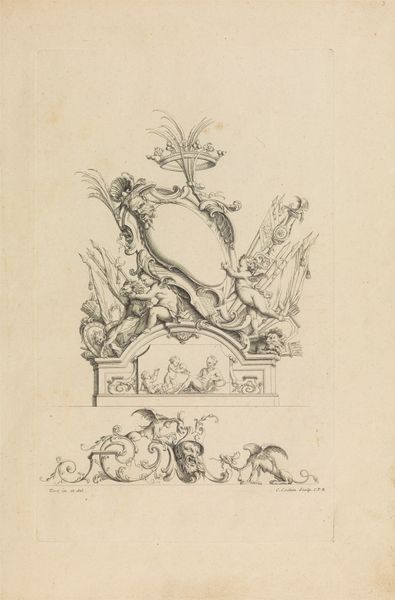
engraving
#
allegory
#
baroque
#
old engraving style
#
cityscape
#
history-painting
#
engraving
Dimensions: height 194 mm, width 127 mm
Copyright: Rijks Museum: Open Domain
Jeremias Wachsmuth created this print, “Het Uur,” in the eighteenth century using etching. This work reflects the cultural obsession with time, mortality, and morality characteristic of the Baroque period. Here, we see the depiction of time as a clock face surrounded by cherubic figures, which is juxtaposed with a landscape below. Consider the historical context: the 1700s were a time of burgeoning scientific discovery alongside staunch religious beliefs. Wachsmuth's piece seems to grapple with this tension. The cherubs, symbols of innocence and divinity, frame the clock, yet the inscription speaks of fleeting time and aging. Note the lone figure in the landscape. Is this person a representation of our own fleeting existence? The print invites us to meditate on our own mortality. It serves as a reminder of the precious, transient nature of life, urging viewers to reflect on their actions and their relationship with time.
Comments
No comments
Be the first to comment and join the conversation on the ultimate creative platform.
